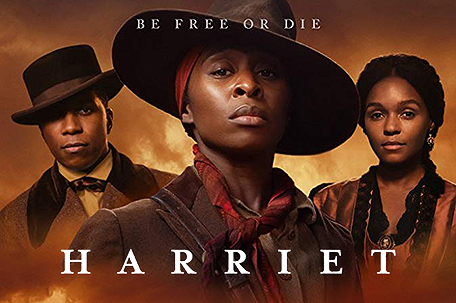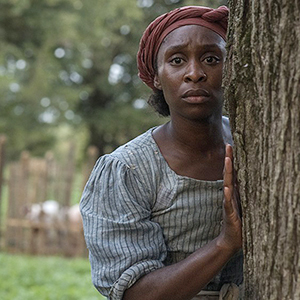
Harriet Tubman gets the spotlight in the new film “Harriet,” and so does 19th century Philadelphia.
By Denise Clay
As part of the 28th annual Philadelphia Film Festival, director Kasi Lemmons brought her latest project, “Harriet” to the Philadelphia Film Society theater Wednesday night.
The Harriet Tubman biopic, which stars Tony-Award winning actors Cynthia Erivo and Leslie Odom Jr., tells the story of the abolitionist and conductor for the Underground Railroad that led Blacks from enslavement in the South to freedom in the North.
Prior to the showing, Lemmons, who co-wrote the film’s screenplay with producer Gregory Allen Howard, talked about the film and the honor it was to be a part of its creative process. Lemmons — whose directorial credits also include “Eve’s Bayou” and “Talk To Me” — was brought onto the project by Howard’s co-producers Debra Martin Chase and Daniela Taplin Lundberg, she said. As an African American female director, she considers the trust placed in her a gift, a gift she had to handle with care.
“It was an honor, and with great honor and excitement I accepted,” Lemmons said. “It’s intimidating to take on an icon like Harriet Tubman. But I realized that if I was going to tell the story, and that if I could summon just a little bit of her courage to bring her story to light, it would be really powerful. I felt a spiritual connection to her story.”

It also gives us a chance to look at something we sometimes try and avoid at all costs: our nation’s history, Lemmons said. At a time when the President of the United States equates Congress using its investigatory power to a lynching, people need to understand exactly what happened when it comes to America’s history…whether they like it or not, she said.
“I think that we have to be willing to look at our history,” she said. “I know it’s uncomfortable, but we have to be willing to look back in order to ensure that we understand the past enough that it doesn’t keep reoccurring. If we blind ourself to our history, then myths can be perpetuated.”
While the movie reflects the seven months of research that Lemmons put into it, I’m not sure how uncomfortable it’s going to make people compared to other films about the antebellum period in American history. Unlike “12 Years A Slave,” the more graphic elements of slavery aren’t a part of the “Harriet” experience. But Erivo’s stunt person was probably the hardest working woman on set as she had to jump from bridges, roll down hills and do a whole lot of strenuous movement to illustrate Tubman’s escape from slavery and what it took for her to continue returning to the South to free everyone from her brothers and sisters to her parents.
Also, I’m not so sure how people who are historians specializing in Tubman’s life are going to react to this movie. While Odom, who plays William Still, author of many of the slave narratives Lemmons used for the film, and Janelle Monae, who portrays Tubman’s friend Marie Buchanon, give strong performances, there were parts of the movie that played like a conventional biopic. While that makes it more accessible, it also makes “Harriet” telegraph its punches a bit in spots, like, for example, all of the times where Tubman is given an almost feminist ethos in response to Still’s almost constant proclamations that she needed to be more cautious in her trips to the South. If you don’t see that every time Still told Tubman “You can’t do that!” about any of her anti-slavery activities, you’re better than me.
The performances of Henry Hunter Hall as Walter, a former slave catcher who decided to help Tubman instead and Clarke Peters, as Tubman’s father Ben Ross, also stood out to me because they showed that humor was possible, even under those circumstances. The ways that Peters’s Ben Ross invents to be able to say he didn’t “see” his daughter when she came to visit during her slave freeing trips made many in the audience I saw this with laugh out loud.
But one of the characters that looks particularly good in “Harriet” is the City of Philadelphia. As the first place that Tubman comes to once she crosses the Mason-Dixon Line and the place where she does her best work as an abolitionist, Philadelphia plays a prominent part in this film and sometimes makes you wonder as a Philadelphian why we don’t draw more on that history in our everyday lives.
“Harriet” is a film worth seeing if for no other reason that it tells the story of someone we all thought we knew with the kind of depth that such stories about women rarely get. The strong performances and glowing views of Philadelphia are a bonus.
“Harriet” opens in theaters nationwide on Friday, Nov. 1. It is rated PG-13.
















Leave a Comment